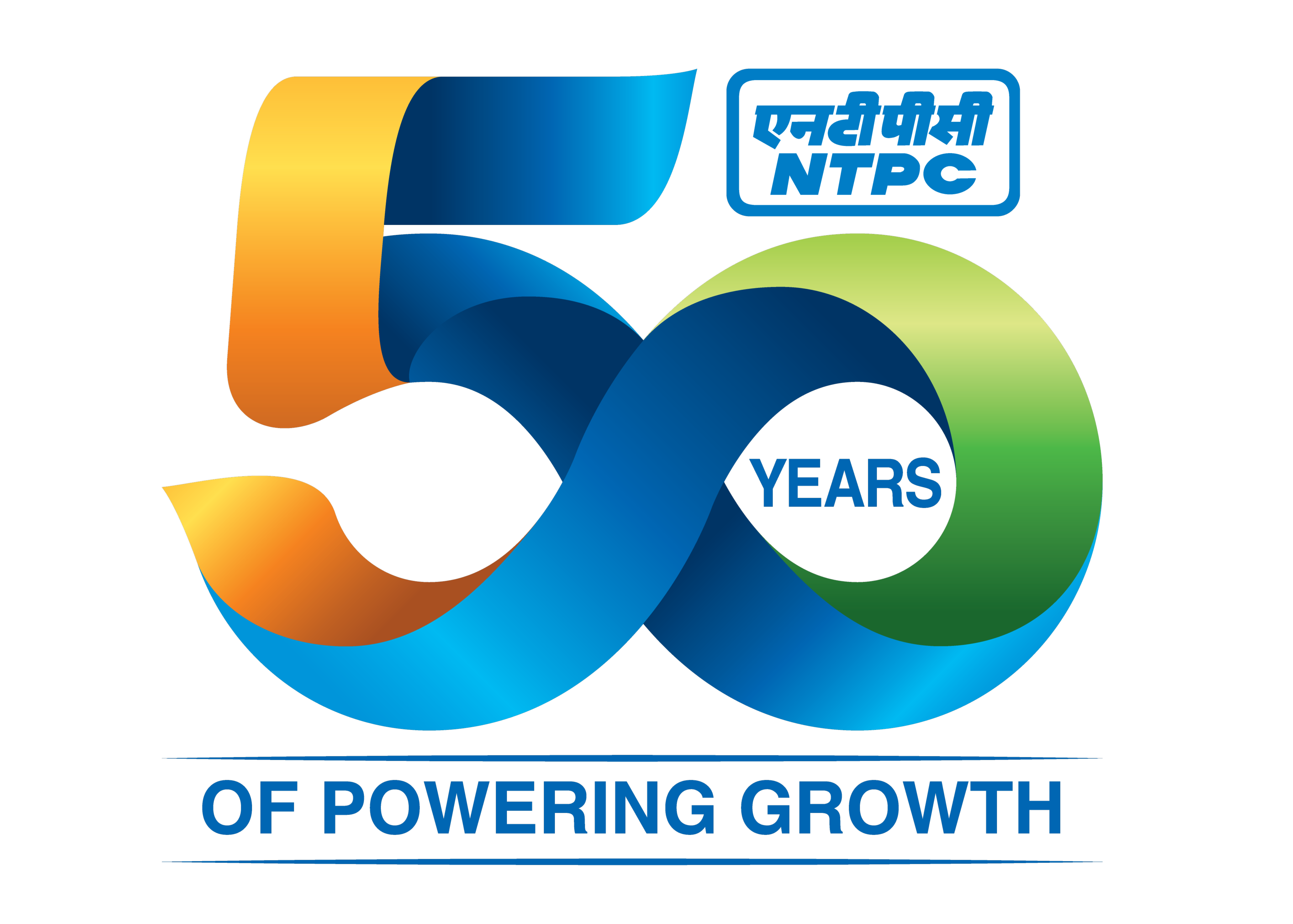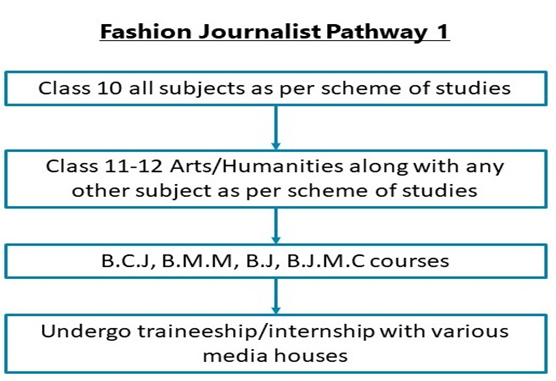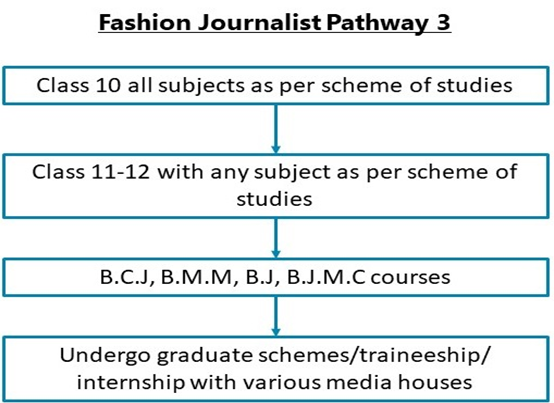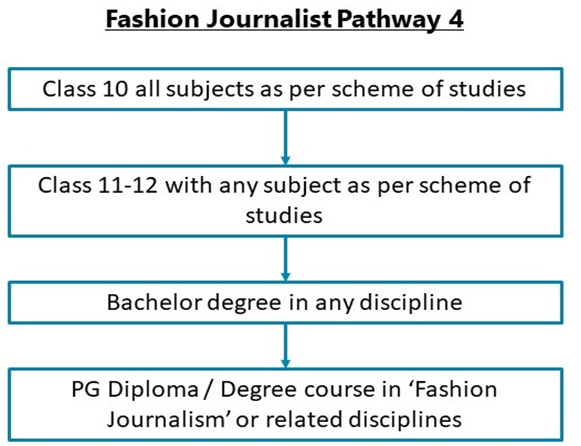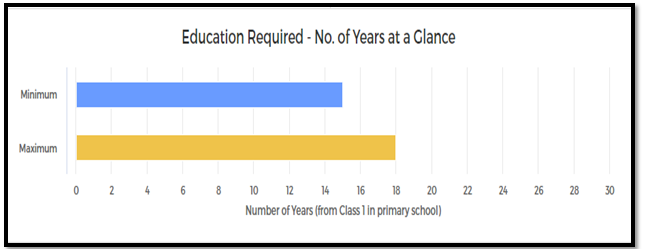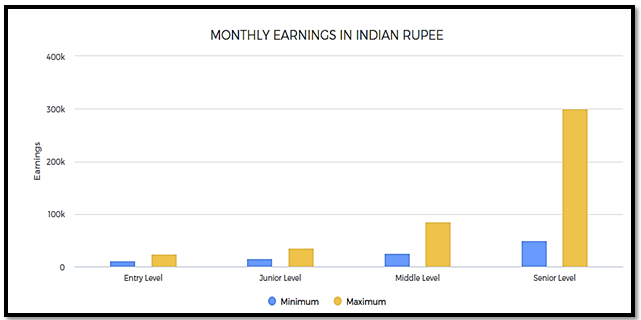Fashion Journalist
Entry Level Qualification
12
Career Fields
Mass Media, Journalism & Entertainment
For Specially Abled







Career Entrance Exam
About Career
1. As the name suggests, Fashion Journalists focus on reporting the latest news and stories from the world of fashion, film and glitz. Fashion journalists write about and report on fashion shows, fashion designers, award functions, public appearances of celebrities, critical analyses about celebrities, and various fashion-related brands (clothing, accessories, footwear etc). Their job duties include tasks like reporting from a live event, interviewing media personalities, performing live narration for an event, conducting consumer-oriented analysis related to fashion products and trends etc.
2. As a Fashion Journalist, you will be working with major newspapers, magazines, media houses, newswires, websites, radio stations, television companies, periodical publishers or journals operating in both online and print media spaces. Your job may be to reproduce first-hand information gathered by reporters, anchors, interviewers, photographers etc., about events, facts, ideas and people in a written format. You may have to coordinate your work with news editors, copywriters, marketing executives, advertisement agencies, graphic designers, etc. to produce an effective piece of a news report from received first-hand information.
3. Today, all major newspapers, magazine and media houses have an e-presence. This means they can reach a wider audience through their websites or online presence as the modern commoner demands accessible digital news which they can find through their mobile phones or laptops, instead of spending hours on tangible newspapers!
4. Keeping all of this in mind and since social media is the ruling factor today, as a Fashion Journalist you will have to bear the responsibility to ensure that authentic information written in the right way reaches the right audience at the right time through the right medium. You will be an integral part of the Media and entertainment industry.
5. The main struggle for you will be to meet tight deadlines and tough work schedules because as in most cases, the news items need to be broadcasted, released or made live within a particular time frame which may be only a few minutes. As this is a fiercely competitive field, tough timelines will ensure that your work keeps ahead of others in the industry producing similar news content.
PARTICULARS | DESCRIPTION |
Name | Fashion Journalist |
Purpose | Report, Evaluate, & Discuss Fashion, events, collections |
Career Field | Mass Media, Journalism & Entertainment |
Required Entrance Exam | NIFT GAT |
Average Salary | 150000 - 300000 Rs. Per Year |
Companies For You | Bazaar, Elle, NDTV, Discovery, & Many More |
Who is Eligible | Class 12th pass |
Key Roles and Responsibilities:
As a Fashion Journalist, you will be engaged with one or more of the following roles and responsibilities: -
1. You will be receiving assignments or evaluating tips or leads to create story ideas.
2. You will be researching a story's background information to provide accurate and complete information.
3. You will be reporting news stories for broadcast or publication, describing the details and background of events.
4. You will be gathering information and data about events through interviews, research, experience or by attending fashion shows, awards, artistic, political, social, or other public functions.
5. You will be reviewing and evaluating notes collected about news events to aggregate pertinent details and facts.
6. You may be reviewing audio, written, or video copy and correcting errors in grammar, content, or punctuation, as per prescribed formatting guidelines, word limits and editorial styles.
7. You may be determining the length, emphasis, and format of a published or broadcasted story and organizing material accordingly.
8. You may be developing material or ideas for commentaries or columns by interpreting and analyzing current issues, news, or personal experiences.
Career Entry Pathway
Class 10 all subjects as per scheme of studies - Class 11-12 Arts/Humanities along with any other subject as per scheme of studies – B.C.J, B.M.M, B.J, B.J.M.C courses - Undergo traineeship/internship with various media houses
After completing Class 10 all subjects as per scheme of studies then Class 11-12 Arts/Humanities along with any other subject as per scheme of studies, you can go for B.C.J (Bachelor of Communication & Journalism), B.M.M (Bachelor of Mass Media), B.J (Bachelor in Journalism), B.J.M.C (Bachelor in Journalism and Mass Communication) courses. Then you can apply for traineeship/internship with various media houses. Then you can apply for traineeship/internship with various media houses.
Class 10 all subjects as per scheme of studies - Class 11-12 with any subject as per scheme of studies – B. Voc course in ‘Fashion Journalism’ or related disciplines- Undergo graduate schemes/traineeship/ internship with various media houses
After completing Class 10 all subjects as per scheme of studies then Class 11-12 with any subject as per scheme of studies, you can go for a B. Voc. (Bachelor of Vocation) course in ‘Fashion Journalism’, ‘Fashion Communication’, ‘Journalism’, ‘Journalism and Mass Communication’, ‘Documentary Production, Television Advertising & Public Relation’, ‘Media and Communication’, ‘Digital Journalism’, ‘Broadcast Journalism’, ‘Media Communication’, ‘Corporate Communication’, ‘Digital and Interactive Media Journalism’, ‘Enterprise Journalism’, ‘Journalism Design and Graphics’, ‘Mass Communication’, ‘News Reporting and Writing’, ‘Media Relations’, ‘Crisis Communications’, ‘Digital Media’, ‘Interpersonal Communication’, ‘Media Management’, ‘Communication Research’, ‘Radio Journalism‘ or related disciplines. Then you can apply for graduate schemes/traineeship/ internship with various media houses.
Class 10 all subjects as per scheme of studies - Class 11-12 with any subject as per scheme of studies - B.C.J, B.M.M, B.J, B.J.M.C courses - Undergo graduate schemes/traineeship/ internship with various media houses
After completing Class 10 all subjects as per scheme of studies then Class 11-12 with any subject as per scheme of studies, you can go for B.C.J (Bachelor of Communication & Journalism), B.M.M (Bachelor of Mass Media), B.J (Bachelor in Journalism), B.J.M.C (Bachelor in Journalism and Mass Communication) courses. Then you can apply for graduate schemes/traineeship/ internship with various media houses.
Class 10 all subjects as per scheme of studies - Class 11-12 with any subject as per scheme of studies – Bachelor degree in any discipline - PG Diploma / Degree course in ‘Fashion Journalism ‘or related disciplines
After completing Class 10 all subjects as per scheme of studies then Class 11-12 with any subject as per scheme of studies, then your Bachelor Degree in any discipline, you can go for a Post Graduate Diploma / Degree course in ‘Fashion Journalism’, ‘Fashion Communication’, ‘Journalism’, ‘Documentary Production, Television Advertising & Public Relation’, ‘Mass Communication’, ‘Mass Media’, ‘Communication & Journalism’, ‘Media and Communication’, ‘Digital Journalism’, ‘Broadcast Journalism’, ‘Media Communication’, ‘Corporate Communication’, ‘Digital and Interactive Media Journalism’, ‘Enterprise Journalism’, ‘Journalism Design and Graphics’, ‘News Reporting and Writing’, ‘Media Management’, ‘Media Relations’, ‘Crisis Communications’, ‘Digital Media’, ‘Interpersonal Communication’, ‘Communication Research’, ‘Radio Journalism‘ or related disciplines. Then you can apply for traineeship/ internship with various media houses.
Required Qualification & Competencies
After Class 11-12, you can go for:
1. Diploma / Certificate / Coursework.
2. B.C.J, B.M.M, B.J, B.J.M.C courses.
3. B. Voc. courses.
4. Bachelor degree in any discipline.
After your Bachelor Degree in any discipline, you can go for a Post Graduate Diploma / Degree course in ‘Fashion Journalism’ or any other related disciplines.
Various private/public vocational training establishments across India offer related courses on:
1. Advertising and Mass Communication
2. Journalism & Mass Communication
3. Mass Communication
4. Mass Media Studies
5. Art Communication and Journalism
6. Broadcast (Radio & TV) Journalism
7. Convergent Journalism
8. Journalism
9. Journalism & Mass Communication
10. Online Journalism & Blogging
11. Photojournalism
MINIMUM EDUCATION REQUIRED | MAXIMUM EDUCATION REQUIRED |
Under Graduate Undergraduate Degree / Honours Diploma / Graduate Diploma (equivalent to a Degree) Programs for which the minimum eligibility is a pass in Higher Secondary / Class XII School Leaving examination. | Post Graduate Postgraduate Degree / Diploma / Certificate Programs for which the minimum eligibility is a pass in Graduation / equivalent Diploma program like Honours Diploma or Graduate Diploma. |
Competencies Required
1. You should have interest for Artistic Occupations. Artistic occupations mostly involve working with creative ideas, art,and designs. These occupations involve abstract or conceptual thinking, and creative self-expression and often do not follow any set processes or rules for getting things done.
2. You should have interests for Enterprising Occupations. Enterprising occupations involve taking initiative, initiating actions, and planning to achieve goals, often business goals. These involve gathering resources and leading people to get things done. These require decision making, risk-taking,and action orientation.
3. You should have interest for Investigative Occupations. Investigative occupations involve working with ideas and quite a lot of thinking, often abstract or conceptual thinking. These involve learning about facts and figures; involve the use of data analysis, assessment of situations, decision making and problem-solving.
4. You should have knowledge of English Language - Knowledge about English grammar, words, spelling, sentence construction, using English to communicate with others, reading in English, etc.
5. You should have knowledge of Communications and Media - Knowledge of how different media such as print, television, radio, and social media works; how to produce content such as news, articles, audio-visual programs, etc. for different media. This includes various ways to inform and entertain people via print, audio, audio-visual and online media.
6. You should have Active Listening Skills - Giving full attention to what other people are saying, understanding the points being made by others, asking questions, etc.
7. You should have Reading Comprehension Skills - Skills in understanding written sentences and paragraphs in work related documents.
8. You should have Social Media Skills - Skills in using various social media such as Facebook, Twitter, and Instagram for professional work.
9. You should have Active Learning Skills - Focused and continuous learning from various sources of information, observation and otherwise for application in getting work done.
10. You should have critical thinking skills- Skills in the analysis of complex situations, using logic and reasoning to understand the situations and take appropriate actions or make interpretations and inferences.
11. You should have originality - The ability to come up with unusual or innovative ideas about a given topic or situation, or to develop creative ways to solve a problem.
12. You should have Fluency of Ideas - The ability to come up with a number of ideas about a topic (the number of ideas is important, not their quality, correctness, or creativity).
13. You are mostly impulsive in your action and behavior.
14. You are always imaginative or in most situations.
15. You act independently sometimes but do not do so in some other times.
16. You prefer to experience new things and have new experiences sometimes.
Career - Job Opportunities & Profiles
You will get job opportunities as a Fashion Journalist in companies like Vogue, Harper’s Bazaar, Elle, NDTV, Discovery, BBC, CNN, The Times of India, the Indian Express and The Economic Times or other regional/national:






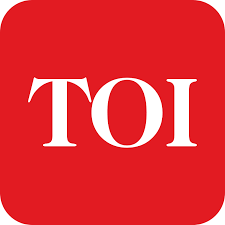
1. Newspapers
2. Magazines
3. Media Houses
4. Newswires
5. Websites / Web Portals
6. Radio Stations
7. Television Companies
8. Periodical Publishers
9. Journals
You may get roles like:
1. Reporter/Journalist
2. Associate Editor
3. Columnist
4. Reporter
5. Web Page content developer
6. Script-writer
7. Ad Sales - Executive
8. Photojournalist
Specialisation Tracks In This Career
1. Fashion Journalist (Electronic Media)
Fashion Journalists working in radio or audio-visual (television) media are often referred to as Electronic Media Fashion Journalists. Typically, unlike print media Fashion Journalists, they report from the spot of an event along with a photographer. Apart from reporting from the spot, they work in the desks in television or radio studios and edit audio-visual clips or audio clips. They may make videoor audio clips from various news sources such as field reports, news agency reports, websites, etc.
2. Fashion Writer / Editor (Print Media)
Print Media Fashion Writers and Editors work in print mediums such as newspapers, magazines, periodicals, etc. They report on various functions, media appearances of celebrities, fashion trends, other events, ceremonies, etc. They may also work in the desks in the offices and work as copy editors, sub-editors, editors, etc. Their work may also involve writing critical analyses about media personalities. They write or edit news stories, features, etc. and make the pages of newspapers, magazines, etc.
3. Fashion Journalist (Online media or Web)
In this specialised area, Fashion Journalists work for web publications. There are many news portals on the web. Fashion Journalists working for web media mostly compile news stories and features from various news agency sources and other web sources. They write the stories and features and then publish the stories online.
4. Fashion Marketer
Fashion Marketers promote clothing, beauty products and other fashion accessories by creating advertising campaigns for increasing public awareness and generating their interest in the promoted products or services of a brand (clothing companies, cosmetic industries or retail stores etc.). They need to find innovative ways in order to keep the public informed about a brand. They need to regularly analyze and study customer satisfaction reports and statistical data in order to determine the types of products that are most suitable or demanded. They need to select and share particular information with the public through various distribution channels like press releases, press conferences, radio, newspapers, and / or television.
5. Fashion Blogger
Fashion Bloggers work independently and either write news stories or shoot videos for their own blogs or write for web news portals as freelance Fashion Journalists. Bloggers who write features (which may include opinion, news analysis, stories on social, economic, and other aspects as well as videos) either write for their own blogs or work as a freelance journalist for web media.
6. Freelance Journalist/Writer (Fashion and Lifestyle)
Freelance Fashion Journalists and Writers work on a freelance basis for print media, web or electronic media. They may write news stories and features or may shoot photographs/videos to go with their news stories and features. Depending upon the kind of assignment they get, they may also accompany photographers and build the stories jointly.
Career Growth
From entry-level job positions as Reporter/Journalist, Associate Editor, Writer, Columnist, Reporter, Anchor, Broadcast Operator, etc., you may grow into a team leader role managing work of a few journalists. You may have a position as a Senior Reporter, Senior Journalist, Senior Editor, Creative Director, Editor-in-chief after 12+ years of experience or earlier.
Salary Offered
1. Salaries vary according to job profiles and the kind of facilities you get to work at.
2. In the entry-level jobs: You may get about. 12,000.00 – Rs. 24, 000.00 or more per month.
3. Salaries increase with your work experience and as you get promoted.
4. After having 1-6 years of experience, you may expect about Rs. 15,000 – Rs. 35, 000 per month or more.
5. After having 6-12 years of experience, you may get about Rs. 20,000.00 – Rs. 85,000 per month or more.
6. In the senior level jobs, with 12-20 years of work experience, you may expect to get about Rs. 35,000 – Rs. 2,00,000 per month or even more depending upon your position and the company you are working with
Monthly Earning In Indian Rupee
Entry Level | Junior Level | Mid Level | Senior Level | |||||
Min Earning | Max Earning | Min Earning | Max Earning | Min Earning | Max Earning | Min Earning | Max Earning | |
12000 | 24000 | 15000 | 35000 | 25000 | 85000 | 50000 | 300000 | |
1. Entry level: 0 - 2 years of work experience
2. Junior Level: From 1 to 12 years of work experience
3. Mid-Level: From 5 to 20+ years of work experience
4. Senior Level: From 10 to 25+ years of work experience (there could be exceptions in some high-end technical, financial, engineering, creative, management, sports, and other careers; also in the near future, people will reach these levels much faster in many careers and in some careers, these levels will have no meaning as those careers will be completely tech skill driven such as even now, there is almost no level in a Cyber Security Expert’s job)
Work Activities
1. Getting Information and learning - Observing, hearing, reading, using computers, or otherwise obtaining information and learning from it.
2. Analysing and interpreting data and information - Analysis of data and information to find facts, trends, reasons behind situations, etc.; interpretation of data to aid in decision making.
3. Identifying objects, actions, and events - Identifying various characteristics of objects; observing and understanding actions and events; understanding changes in actions and events.
4. Processing information - Searching, compiling, tabulating, calculating, auditing, verifying or otherwise dealing with information processing including data entry, transcription, recording, storing and maintaining databases.
5. Working with computers, programming and performing technical tasks– Using computers and computer systems, hardware, and software for designing computer applications, mobile applications, etc.
6. Communicating with co-workers and others– Communicating with people in writing, verbally or otherwise inside your workplace and various other people who have professional relationships with your place of work.
7. Presenting and demonstrating work to others – you will need to present and demonstrate your work to others such as clients, co-workers, and superiors.
8. Creative thinking - Developing new ideas, concepts, innovative solutions to problems, newer ways of getting things done, designing products and services and creating effective, user-friendly and appealing products.
9. Working in a team - Working in a multi-disciplinary team of people; developing a team; maintaining professional relationships among team members.
Future Prospects
1. The road ahead for this pathway looks sunny and uphill. The growth in the sub-sectors of the Indian Media and Entertainment Industry showed decent growth. The Television industry is expected to grow in terms of employment volume to 0.64 million by 2022 from 0.28 million in 2017, translating to a human resource requirement of 0.36 million.
2. The Print Media industry is expected to grow in terms of employment volume to 0.13million by 2022 from 0.07million in 2017, translating to a human resource requirement of 0.06million.the radio industry is expected to grow in terms of employment volume to 0.04 million by 2022 from 0.03 million in 2017, translating to a human resource requirement of 0.01million.
3. The overall industry growth of Media and Entertainment Sector has been estimated at a rate of 13.10% compounded annually to touch the mark of 39.68 billion US Dollars by 2023 from 22.28 billion US Dollars in 2018. India’s media consumption has been growing at an alarming rate of 9% in the period 2012-2018 compounded annually. This is 9 times that in the US and 2 times that in China.
4. Revenues from the Advertising sector are forecasted to reach 18.39 billion US Dollars by 2023 from 9.44 billion US Dollars in 2018.Digital advertising industry in India is expected to grow at a rate of 32% compounded annually to touch the mark of 2.93 billion US Dollars by 2020. Viewership in the regional entertainment segment is constantly surging and the south Indian television industry is one of the oldest television sectors in India that is still operational and expanding.
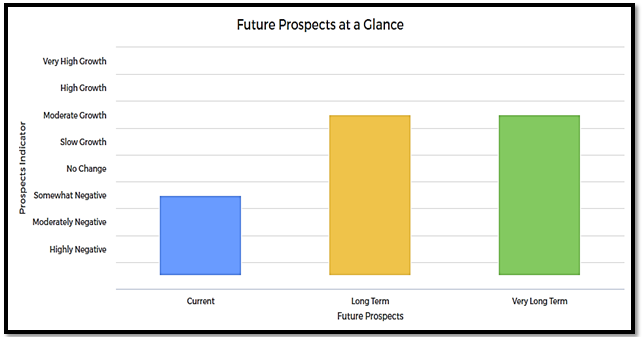
Future Prospects At A Glance
Current (0-1 year) | Long Term (2-5 year) | Very Long Term (6-10 years) |
Somewhat Negative | Moderate Growth | Moderate Growth |
